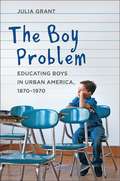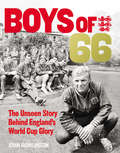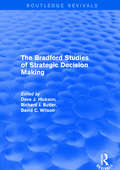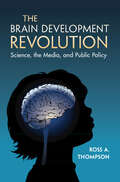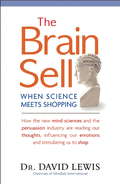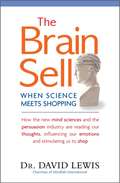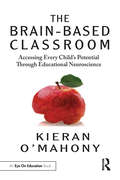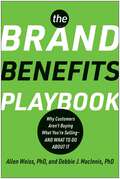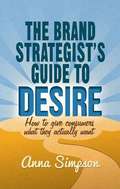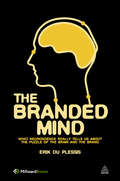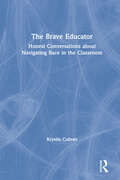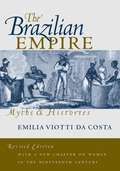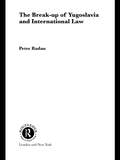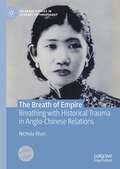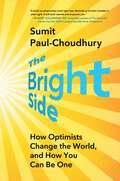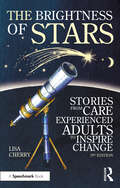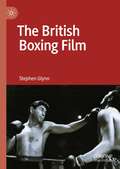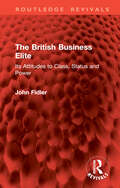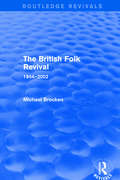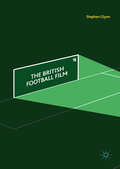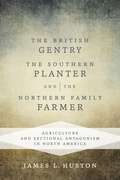- Table View
- List View
The Boy Problem: Educating Boys in Urban America, 1870-1970
by Julia Grant<p>America’s educational system has a problem with boys, and it’s nothing new. <p>The question of what to do with boys―the "boy problem"―has vexed educators and social commentators for more than a century. Contemporary debates about poor academic performance of boys, especially those of color, point to a myriad of reasons: inadequate and punitive schools, broken families, poverty, and cultural conflicts. Julia Grant offers a historical perspective on these debates and reveals that it is a perennial issue in American schooling that says much about gender and education today. <p>Since the birth of compulsory schooling, educators have contended with what exactly to do with boys of immigrant, poor, minority backgrounds. Initially, public schools developed vocational education and organized athletics and technical schools as well as evening and summer continuation schools in response to the concern that the American culture of masculinity devalued academic success in school. <p>Urban educators sought ways to deal with the "bad boys"―almost exclusively poor, immigrant, or migrant―who skipped school, exhibited behavioral problems when they attended, and sometimes landed in special education classes and reformatory institutions. The problems these boys posed led to accommodations in public education and juvenile justice system. <p>This historical study sheds light on contemporary concerns over the academic performance of boys of color who now flounder in school or languish in the juvenile justice system. Grant's cogent analysis will interest education policy-makers and educators, as well as scholars of the history of education, childhood, gender studies, American studies, and urban history.</p>
The Boy Who Harnessed the Wind: Young Readers Edition
by William Kamkwamba Bryan Mealer Anna HymasNIMAC-sourced textbook
The Boys of ’66 - The Unseen Story Behind England’s World Cup Glory
by John RowlinsonWembley, 30 July 1966… Geoff Hurst completes his hat trick… England are the World Cup champions.Everyone knows how the story ends, but how did it begin? How did Alf Ramsey assemble an England team to win the trophy for the first, and so far only time? The choice of the final eleven was far from straightforward: in just over three years Ramsey selected no less than fifty players and, at the start of 1966, two of the winning team had still to make their debuts for England.This book charts the chequered path to eventual victory, assesses both the players who made the final squad and those who lost out and, with the help of previously unpublished photographs, provides a unique chronicle of professional football over fifty years ago.
The Bradford Studies of Strategic Decision Making
by David C. Wilson David J. Hickson Richard J. ButlerThis title was first published in 2001. This volume brings together the 25-year output of the longest running programme of research into the making of decisions by top management. It describes and explains the processes of arriving at major decisions and how they are affected by the issue under decision, the form of organization and national differences and then, finally, success and failure in implementation. The programme continues with research on routes in successfully managing implementation.
The Brain Sell
by David LewisIn a room sat a theoretical physicist, an engineer, a mathematician, a biochemist, and a neuropsychologist. Their task? To evaluate the effectiveness of a marketing campaign for a grooming product that retails for less than $15.00.The Brain Sell, praised as the new Hidden Persuaders, is the inside story of how our rapidly evolving understanding of the brain plays into the advertising, marketing, and retailing industry. With the emergence of Big Data mining, the "persuasion industry" is more prominent than ever. David Lewis, PhD, internationally renowned researcher, brings science to shopping-mapping the brain and the body to explore the sensitivities in our minds and discover how we select and buy. Gone are the days of traditional salesmanship-in the United Kingdom and United States alone, $313 billion is spent annually on subliminal messaging and measuring consumers' subconscious reactions to the color of a child's toy, the smell of a store's interior, or the font of the smallest letter on a soup can. Lewis repeatedly surprises with secrets from the advertising and marketing industries, revealing the scientific strategies used to evaluate and manipulate consumer response. An enlightening read for marketers and advertisers and an urgently important one for anyone who considers themselves a "smart shopper." The Brain Sell shows that even after the product is on the shelf and the commercial is over, the sales pitch goes on.David Lewis, PhD, a neuropsychologist, is founder and director at the independent research consultancy Mindlab International based at the University of Sussex. Additionally, he is a psychologist, an international lecturer, and acclaimed author, most recently of Impulse (Harvard University Press). Dubbed the "father of neuromarketing" for his pioneering studies of analyzing brain activity for research and commercial purposes, he currently specializes in noninvasive techniques for measuring human responses under real life conditions.
The Brain Sell: When Science Meets Shopping
by David LewisScience has made the leap from the lab to come to a store near you and the effects on us are phenomenal. Corporations in hyper-competition are now using the new mind sciences to analyze how and when we shop, and the hidden triggers that persuade us to consume. From bargains in the Big Apple to the bustling bazaars of Istanbul, from in-store to interactive and online to mobile, neuromarketing pioneer Dr. David Lewis goes behind the scenes of the persuasion industry to reveal the powerful tools and techniques, technologies and psychologies seeking to stimulate us all to buy more often without us consciously realizing it.
The Brain Sell: When Science Meets Shopping
by David LewisScience has made the leap from the lab to come to a store near you and the effects on us are phenomenal. Corporations in hyper-competition are now using the new mind sciences to analyze how and when we shop, and the hidden triggers that persuade us to consume. From bargains in the Big Apple to the bustling bazaars of Istanbul, from in-store to interactive and online to mobile, neuromarketing pioneer Dr. David Lewis goes behind the scenes of the persuasion industry to reveal the powerful tools and techniques, technologies and psychologies seeking to stimulate us all to buy more often without us consciously realizing it.
The Brain-Based Classroom: Accessing Every Child’s Potential Through Educational Neuroscience
by Kieran O'MahonyThe Brain-Based Classroom translates findings from educational neuroscience into a new paradigm of practices suitable for any teacher. The human brain is a site of spectacular capacity for joy, motivation, and personal satisfaction, but how can educators harness its potential to help children reach truly fulfilling goals? Using this innovative collection of brain-centric strategies, teachers can transform their classrooms into deep learning spaces that support their students through self-regulation and mindset shifts. These fresh insights will help teachers resolve classroom management issues, prevent crises and disruptive behaviors, and center social-emotional learning and restorative practices.
The Brand Benefits Playbook: Why Customers Aren't Buying What You're Selling--And What to Do About It
by Allen Weiss Deborah J. MacInnis2024 Global Book Awards Finalist From two of the world&’s leading experts on branding, brand benefits, and positioning, this strategic guide reveals how focusing on brand benefits can transform organizations and help them win in the marketplace. Today&’s customers think less about products and more about brands, no matter whether those brands are organizational, nonprofit, individuals, or service oriented. Customers also care less about the features of your product—what it has—than about its benefits—what it does for them. While this sounds like common sense, shockingly few organizations actually conduct business this way. Drs. Allen Weiss and Debbie J. MacInnis, professors and branding, brand benefits, and positioning experts, are about to change that. In The Brand Benefits Playbook, Weiss and MacInnis help readers understand, and transition to, a benefits-based model. This focus on customer benefits will teach organizations: What market they are in (or could be operating in) How customers perceive their brand (and that of their competitors) in terms of benefits The most effective way to segment a market and position a brand in terms of benefits How to deliver benefits throughout the customer journey How a focus on benefits facilitates growth Evidence-based, integrated, and simple, this innovative approach can be applied to all markets—and ensures that any brand can deliver the benefits its customers truly want.
The Brand Strategist’s Guide to Desire
by Anna SimpsonBlending emotional branding and sustainable thinking, this book will help brands understand the foundations of desire to create sustainable brand loyalty, healthier societies, and more fulfilled customers. Supported by interviews and case studies, Simpson explores five primary desires: self-worth, social life, culture, comfort, and exploration.
The Branded Mind: What Neuroscience Really Tells Us About the Puzzle of the Brain and the Brand
by Erik Du PlessisThe Branded Mind is about how people think, and particularly how people think about brands. It explores what we know about the structure of the brain, how the different parts of the brain interact, and then demonstrates how this relates to current marketing theories on consumer behaviour. Investigating developments in neuroscience and neuromarketing, and how brain science can contribute to marketing and brand building strategies, The Branded Mind is based on exclusive research by Millward Brown, one of the World's top market research companies. This unique and insightful book covers everything from the nature of feelings, emotions and moods, to consumer behaviour, decision making and market segmentation, and how to use these insights to the benefit of your brand.
The Brave Educator: Honest Conversations about Navigating Race in the Classroom
by Krystle CobranThe Brave Educator equips you with accessible and refreshingly useful tools for real conversations about race that prepare students for the world beyond the school walls. More than a toolkit, this book is a personal conversation exploring the journey from being stuck in the belief that we should already know how to lead conversations about race to learning how to actually have the conversation. It’s companionship for educators, leaders, and teachers facing overwhelming daily responsibilities and searching for open-hearted support. Inside you’ll find a flexible road map to help carve a path through difficult conversations in your classroom, plus question prompts, resource lists, and crucial tips to help you avoid common pitfalls. The grounded perspective and real-world examples in these pages will help you feel less alone as you move from tentative to prepared.
The Brazilian Empire: Myths and Histories
by Emilia Viotti Da CostaThe book explores the social, political, economic, and intellectual currents that shaped nineteenth-century Brazil and whose reverberations continue to be felt throughout contemporary Brazilian society.
The Break-up of Yugoslavia and International Law (Routledge Studies in International Law)
by Peter RadanThe demise of the former Yugoslavia was brought about by various secessionist movements seeking international recognition of statehood. This book provides a critical analysis from an international law perspective of the break-up of Yugoslavia.Although international recognition was granted to the former Yugoslav republics of Slovenia, Croatia, Bosnia-Hercegovina and Macedonia, the claims of secessionist movements that sought a revision of existing internal federal borders were rejected. The basis upon which the post-secession international borders were accepted in international law involved novel applications of international law principles of self-determination of peoples and uti possidetis. This book traces the developments of these principles, and the historical development of Yugoslavia's internal borders.
The Breath of Empire: Breathing with Historical Trauma in Anglo-Chinese Relations (Palgrave Studies in Literary Anthropology)
by Nichola KhanThis Palgrave Pivot combines anthropological, biographical and autoethnographic perspectives onto imperial intimacies, the transgenerational transmission of colonial and familial trauma, and violence in two kinds of household: the Chinese family in British Hong Kong and wider imperial Asia, and the Anglo-Chinese family in England. Conjoining approaches from literary anthropology, the historiography of Anglo-Chinese relations, and perspectives on colonial trauma, it highlights the relative neglect of women’s stories in customary Chinese readings, colonial accounts, and an ancestral family record from 1800 to the present. Offering an alternative view of family history, this book links the body as a dwelling for assaults on the ability to breathe—through tuberculosis, opium smoking, asthma, and panic—with the physical home that is assaulted in turn by bombs, killing, intimate betrayals, and fatal respiratory illness. The COVID-19 “pandemic of breathlessness” serves as mnemonic both for state repression, and for the reprisal of historical fears of suffocation and dying. These phenomena converge under an analytic concept the author calls respiratory politics.
The Bride Price
by Mai Neng MouaWhen Mai Neng Moua decides to get married, her mother, a widow, wants the groom to follow Hmong custom and pay a bride price, which both honors the work the bride's family has done in raising a daughter and offers a promise of love and security from the groom's family. Mai Neng, who knows the pain this tradition has caused, says no. Her husband-to-be supports her choice.
The Bright Side: How Optimists Change the World, and How You Can Be One
by Sumit Paul-ChoudhuryIn the thought-provoking tradition of Steven Pinker&’s Enlightenment Now and Yuval Noah Harari&’s Homo Deus, a fascinating and reassuring look at the philosophy, psychology, and practice of optimism, and why being optimistic is a moral obligation—even in the face of seemingly insurmountable challenges.Scrolling through our daily newsfeeds we see violence and cruelty, turmoil and injustice, fake news and clickbait, and worsening environmental and social crises—just a few of the dark currents feeding a tidal wave of pessimism. In the face of so many challenges, how can we stay optimistic? And, more important, why should we? In The Bright Side, Sumit Paul-Choudhury answers these pressing questions, arguing that optimism is not only essential for overcoming the challenges we face, but also fundamental to human wellbeing. Drawing on a wide array of evidence—from biology to history, and from economics to meteorology—he delves into the underappreciated roots of optimism, examines its impact on mental health and professional success, and discusses why it has a power that wishful thinking lacks. Additionally, The Bright Side shows how we can apply the principles of optimism to cope with environmental crises, artificial intelligence, and social change. From the polar reaches to the world&’s mightiest cities, through inspirational figures including explorers, activists, and scientists, the book illustrates optimism in action. A beacon amid dark times, The Bright Side provides a lens through which we can see the challenges we face more clearly—and it also offers tools for solving them, to create a better future for ourselves and generations to come.
The Brightness of Stars: Stories Of Adults Who Came Through The Care System
by Lisa CherryIn this poignant book, Lisa Cherry brings together a collection of candid and personal reflections on the care system in the UK, offering alternative ways of thinking about the care experience, supporting better ways of working, and providing justification for a trauma-informed lens to be applied to all forms of work with those in care. Through personal insights and reflections, the book brings often-unheard stories vividly to life, beginning with the author’s own. These are stories about love and pain; hurt and isolation; the depth of lived experience that makes up a life; how we live our lives through our relationships with others and where we feel we fit in. In this thoughtfully compiled third edition, original contributors look back on their own reflections from the lives that they live now, new stories bring new perspectives, and discussion points provide the opportunity to consider the realities of the care experience as well as life beyond. Whilst each story is unique, shared themes reveal the truth of the care system and, coming at a time where there is a real opportunity for change, the narratives in this book are ultimately stories of hope and connection. This is crucial reading for policy makers, those working in social work, education and adoption, as well as care experienced adults.
The Brightness of Stars: Stories from Care Experienced Adults to Inspire Change
by Lisa CherryIn this poignant book, Lisa Cherry brings together a collection of candid and personal reflections on the care system in the UK, offering alternative ways of thinking about the care experience, supporting better ways of working, and providing justification for a trauma-informed lens to be applied to all forms of work with those in care.Through personal insights and reflections, the book brings often-unheard stories vividly to life, beginning with the author’s own. These are stories about love and pain; hurt and isolation; the depth of lived experience that makes up a life; how we live our lives through our relationships with others and where we feel we fit in. In this thoughtfully compiled third edition, original contributors look back on their own reflections from the lives that they live now, new stories bring new perspectives, and discussion points provide the opportunity to consider the realities of the care experience as well as life beyond.Whilst each story is unique, shared themes reveal the truth of the care system and, coming at a time where there is a real opportunity for change, the narratives in this book are ultimately stories of hope and connection. This is crucial reading for policy makers, those working in social work, education and adoption, as well as care experienced adults.
The British Boxing Film
by Stephen GlynnThis book constitutes the first full volume dedicated to an academic analysis of the sport of boxing as depicted in British film. Through close textual analysis, production and reception histories and readings that establish social, cultural and political contexts, the book explores the ways in which prizefighters, amateur boxers, managers and supporters (from Regency gentry to East End gangsters) are represented on the British screen. Exploring a complex and controversial sport, it addresses not only the pain-versus-reward dilemma that boxing necessarily engenders, but also the frequently censorious attitude of those in authority, with boxing’s social development facilitating a wider study around issues of class, gender and race, latterly contesting the whole notion of ‘Britishness’. Varying in scope from Northern circuit comedies to London-based ‘ladsploitation’ films, from auteur entries by Alfred Hitchcock to programme fillers by E.J. Fancey, the boxing film also serves as a prism through which one can trace major historical shifts in the British film industry.
The British Business Elite: Its Attitudes to Class, Status and Power (Routledge Revivals)
by John FidlerFirst published in 1981, The British Business Elite is a study of the attitudes to class, status and power of top businessmen in Great Britain, based upon first-hand interviews with chairmen, chief executives and other directors of Britain’s largest industrial, banking and insurance companies: men of genuine wealth and power. Dr Fidler produces important empirical data in a field of study which has been plagued with problems of access; a field in which much of the theory has been based on assumptions.The book includes a careful examination of the background and career of those interviewed; a discussion of the way in which businessmen see the objectives of their companies, particularly relevant to the long-standing debate over the ownership and control of corporations; their views of class and status and of the power of businessmen in Britain. Finally, Dr Fidler considers the implications of the research for future theory and investigation.
The British Folk Revival 1944-2002: 1944-2002 (Routledge Revivals Ser.)
by Michael BrockenThis title was first published in 2003. This work considers the post-war folk revival in Britain from a popular music studies perspective. Michael Brocken provides a historical narrative of the folk revival from the 1940s up until the 1990s, beginning with the emergence of the revival from within and around the left-wing movements of the 1940s and 1950s. Key figures and organizations such as the Workers' Music Association, the BBC, the English Folk Dance and Song Society, A.L. Lloyd and Ewan MacColl are examined closely. By looking at the work of British Communist Party splinter groups it is possible to see the refraction of folk music as a political tool. Brocken openly challenges folk historicity and internal narrative by discussing the convergence of folk and pop during the 1950s and 1960s. The significant development of the folk/rock hybrid is considered alongside "class", "Americana", radio and the strength of pop culture. Brocken shows how the dichotomy of artistic (natural) versus industry (mass-produced) music since the 1970s has led to a fragmentation and constriction of the folk revival. The study concludes with a look at the upsurge of the folk music industry, the growth of festivals and the implications of the Internet for the British folk revival. Brocken suggests the way forward should involve an acknowledgement that folk music is not superior to but is, in fact, a form of popular music.
The British Football Film
by Stephen GlynnThis book constitutes the first full volume dedicated to an academic analysis of British football as depicted on film. From early single-camera silents to its current multi-screen mediations, the repeated treatment of football in British cinema points to the game’s importance not only in the everyday rhythms of national life but also, and especially, its immutable place in the British imaginary landscape. Through close textual analysis together with production and reception histories, this book explores the ways in which professional footballers, amateur players and supporters (the devoted and the demonized) have been represented on the British screen. As well as addressing the joys and sorrows the game necessarily engenders, British football is shown to function as an accessible structure to explore wider issues such as class, race, gender and even the whole notion of ‘Britishness’.
The British Gentry, the Southern Planter, and the Northern Family Farmer: Agriculture and Sectional Antagonism in North America
by James L. HustonDrawing on the history of the British gentry to explain the contrasting sentiments of American small farmers and plantation owners, James L. Huston's expansive analysis offers a new understanding of the socioeconomic factors that fueled sectionalism and ignited the American Civil War. This groundbreaking study of agriculture's role in the war defies long-held notions that northern industrialization and urbanization led to clashes between North and South. Rather, Huston argues that the ideological chasm between plantation owners in the South and family farmers in the North led to the political eruption of 1854-56 and the birth of a sectionalized party system. Huston shows that over 70 percent of the northern population-by far the dominant economic and social element-had close ties to agriculture. More invested in egalitarianism and personal competency than in capitalism, small farmers in the North operated under a free labor ideology that emphasized the ideals of independence and mastery over oneself. The ideology of the plantation, by contrast, reflected the conservative ethos of the British aristocracy, which was the product of immense landed inequality and the assertion of mastery over others. By examining the dominant populations in northern and southern congressional districts, Huston reveals that economic interests pitted the plantation South against the small-farm North. The northern shift toward Republicanism depended on farmers, not industrialists: While Democrats won the majority of northern farm congressional districts from 1842 to 1853, they suffered a major defection of these districts from 1854 to 1856, to the antislavery organizations that would soon coalesce into the Republican Party. Utilizing extensive historical research and close examination of the voting patterns in congressional districts across the country, James Huston provides a remarkable new context for the origins of the Civil War.
